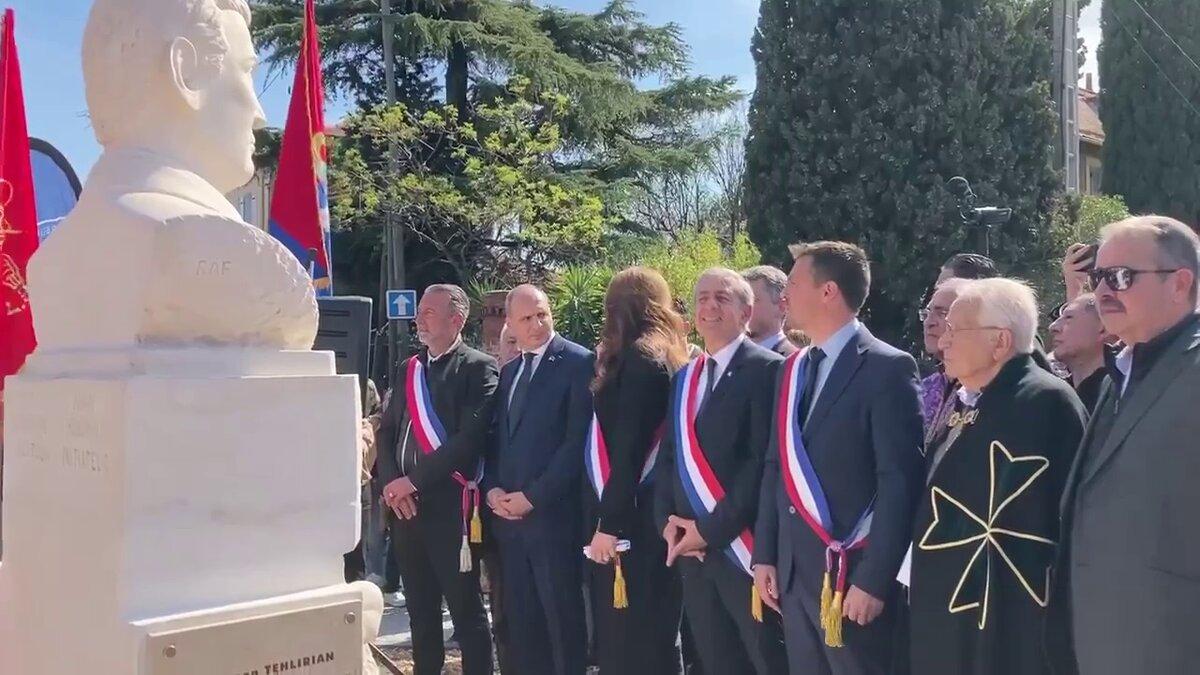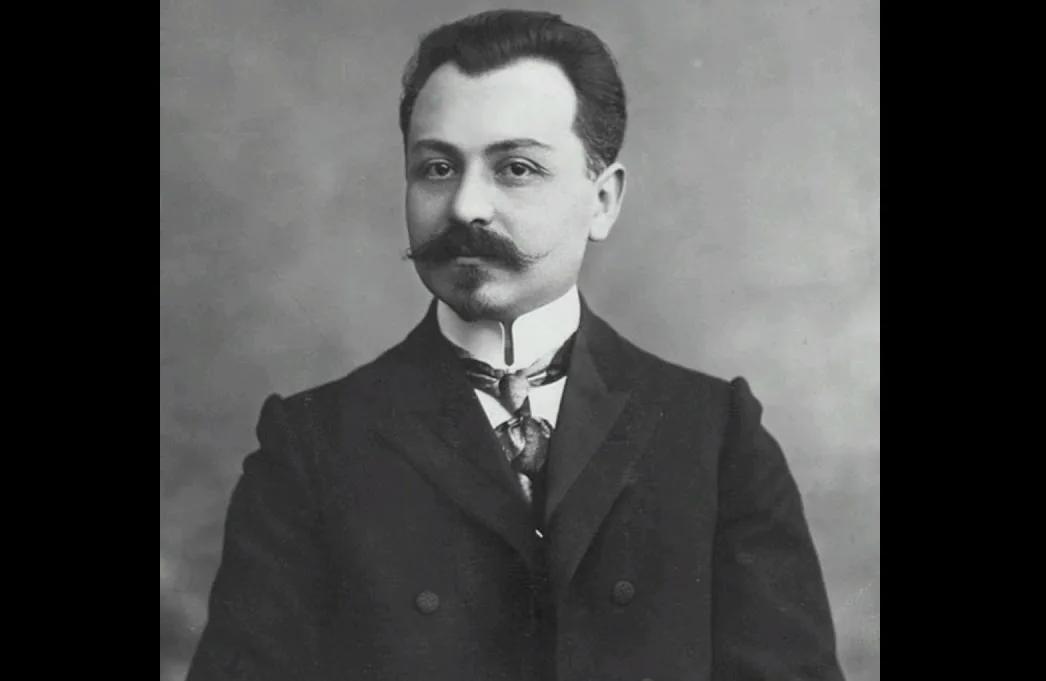France: A country that pays tribute to terrorism Turkophobic "Nemesis" hero honoured in Marseille
The day before, in a solemn atmosphere, a monument to Soghomon Tehlirian was unveiled in Marseille, France. Well, in case anyone doesn't know, he's a terrorist and murderer who, exactly one hundred and three years ago, gunned down a prominent figure of the Young Turks, the former Ottoman Interior Minister and Grand Vizier Mehmet Talaat Pasha, with several shots in the back in front of many witnesses on Gardenbergstrasse in Berlin. Thus, he launched a series of assassinations of Turkish statesmen, in fact, a chain of terrorist attacks against Turks and Azerbaijanis. This series is dubbed Operation Nemesis in Armenia, and not only in Armenia but in many countries where the Armenian lobby is strong. I will give a short list of terrorist victims later, but first a few words about Tehlirian.
In 1920 Soghomon, "luckily saved from genocide", emigrated from Turkey to the USA, where he joined the Dashnaktsutyun party. There is no need to introduce this party, we already know it well. Later, after undergoing combat training, Soghomon came to Berlin on party orders, where he spent several weeks tracking down Talaat Bey. On the morning of March 15, 1921, Tehlirian approached Talaat Bey and shot him in the back of the head. From behind. The shot was fired almost at point-blank range, and all these details are not an attempt to dramatise the situation, they are what Soghomon Tehlirian himself confessed in court. Mehmet Talaat Pasha was assassinated just five months before his fortieth birthday.
The Dashnaks spared no expense in promoting the case in the European press: newspapers all over the continent were full of headlines such as "Late Revenge", "The Executioner Fell by the Hand of the Avenger", "The Suffering of the Armenian People is Avenged", as well as numerous interviews with "accidental survivors of the Turkish atrocity". In general, a lot of work has been done and it is impossible to cope with such a volume without training and high patrons in the circles of European politicians. Neither the Armenian community nor the Dashnaktsutyun party supported by it spared any money for Tehlirian's defence: the defenders at the trial were Privy Counsellor of Justice Dr Adolf von Gordon, Counsellor of Justice Dr Johannes Vertauer and Privy Government Counsellor Dr Niemeyer, who was also a professor of law at Kiel University. You are aware that the services of Privy Officers and advisors in general are not cheap.

At the trial, Tehlerian weeps piteously: "I killed a man, but I'm not a murderer". In general, several factors played a role in the acquittal: anti-Muslim and anti-Turkish sentiments, the hysteria stirred in the press, the fuss made in the courtroom by the defendant's supporters, and the behaviour of Tehlerian himself, who tried hard to portray himself as a man who is constantly in a state of "severe mental shock that has affected his mental abilities". Unfortunately, Tehlerian was acquitted, released in the courtroom, lived in Serbia for some 30 years and later emigrated to the USA, where he died at the age of sixty-three.
Significantly, many children were present at the inauguration of the monument to the terrorist and killer. The children, of course, did not have their transport to the ceremony but were in the company of their parents. Marseille has a fairly large Armenian community. But it was not only Armenians who came. Are we educating the younger generation by the example of a terrorist? Well, well, well. Such things should not be condemned, they should be remembered. It would be very interesting to see the reaction of the world community, and France in particular, if a monument were erected to Said and Cherif Kouachi. Remember them? Yes, I am referring to the little trouble that happened to the editorial staff of Charlie Hebdo.
Now, as promised, a list of victims of Armenia's political tyranny:
On June 19, 1920, the former Prime Minister of the Azerbaijan Democratic Republic Fatali-khan Khoysky was assassinated in Tbilisi and the former Minister of Justice of the Azerbaijan Democratic Republic Khalil-bek Hasmammadov was wounded. The assassination was carried out by Aram Yerkanyan, and the second participant in the operation was Misak Kirakosyan (he was seriously wounded in the terrorist attack).

On July 19, 1920, Hasan-bek Agayev, Deputy Speaker of the National Assembly of the Azerbaijan Democratic Republic, was assassinated in Tbilisi.
On December 5, 1921, Said Halim Pasha, former Grand Vizier of the Ottoman Empire in the first cabinet of the Young Turks, was assassinated in Rome. Unfortunately, the suspected assassin, Arshavir Shirakyan, was not caught and returned safely to Istanbul. The former Armenian ambassador to Rome, Mikayel Vartanyan, was also involved in the assassination of Halim Pasha.
On July 19, 1921, the former Minister of the Interior of the Azerbaijan Democratic Republic, Behbud-Khan Javanshir, was murdered in Istanbul. The accused, Misak Torlakyan, was tried by a British military tribunal, and in October of the same year, the tribunal found Torlakyan guilty of murder but not responsible for his actions, as they had been committed in the heat of passion, and he was exiled to Greece.
On April 17, 1922, the former head of Trabzon, Cemal Azmi, his associate Behaeddin Shakir and Behaeddin's bodyguard were assassinated while walking in Berlin. Cemal Azmi was shot dead by Arshavir Shirakyan and Shakir was wounded and then shot in the head by Aram Yerkanyan.
On July 25, 1922, the former Ottoman Minister of the Navy, Jemal Pasha, was killed in Tiflis. The perpetrators were Petros Ter-Poghosyan and Artashes Gevorgyan, while Zare Melik-Shahnazaryan and Stepan Tsaghikyan were also involved in plotting the assassination.
Operation Nemesis also killed three Armenians who were later declared traitors by the organisers: Mkrtich Harutyunyan, Vahe Ihsani (Yesayan) and Adur Yasyan. Their betrayal consisted in the fact that, as middle-class businessmen (according to other sources, Vahe Ihsani was a low-ranking Turkish government official and Mkrtich worked for Turkish intelligence), they refused to pay regular contributions to the "militant wing" of the Dashnaktsutyun party, which simply taxed all Armenians it could reach.
All this should not be forgotten. I would go further: all this should be recalled, and not only of Tehlerian and Dashnaktsutyun but also of those who were and are behind them. Yes, I am talking about the countries that erect monuments to terrorists.








